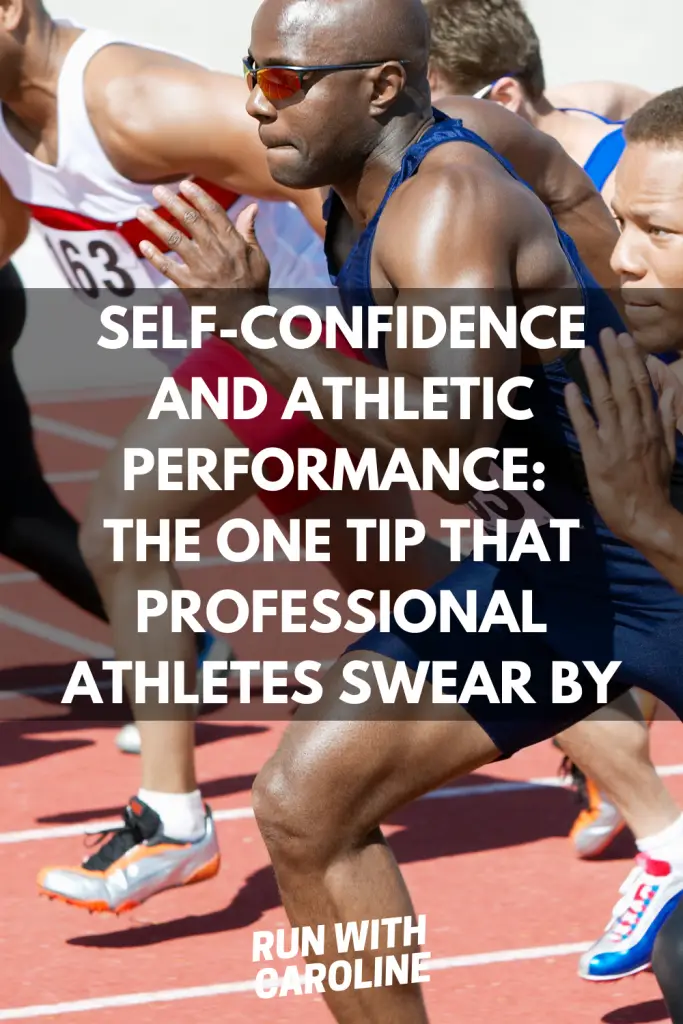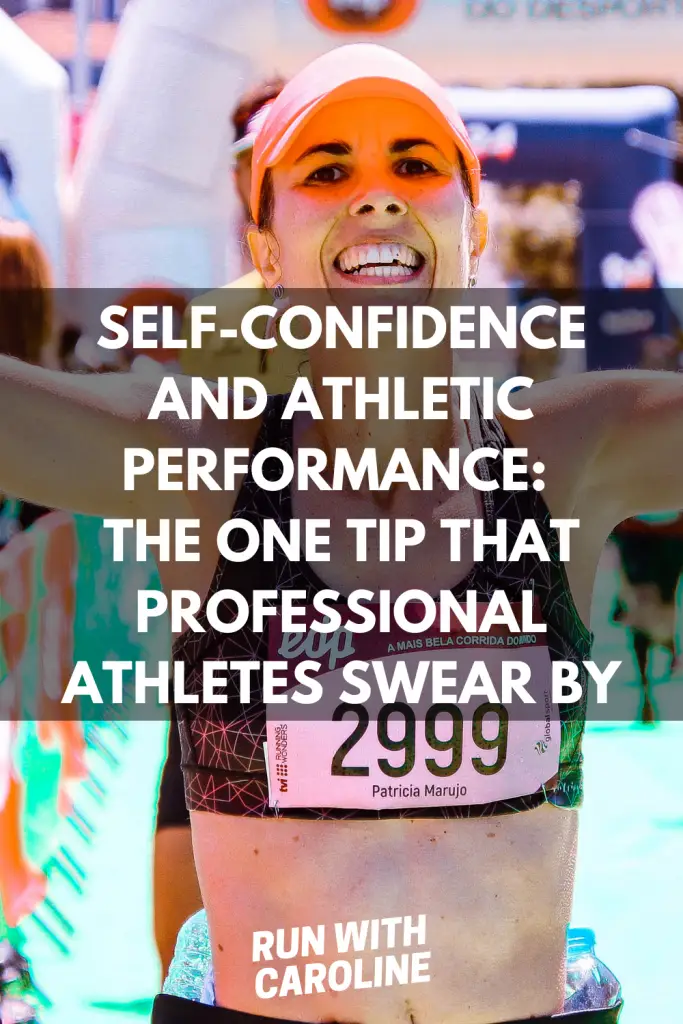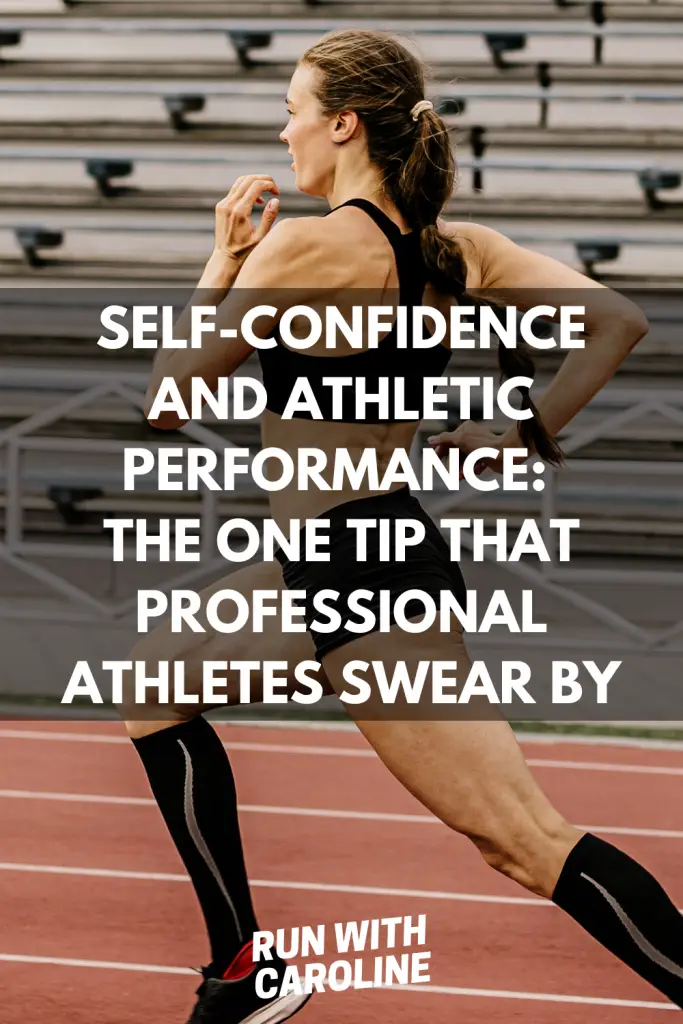Self-confidence and athletic performance are intrinsically linked.
You may feel your confidence comes and goes like the wind. One week you feel on top of the world, the next you struggle to even get out of the door.
You’re not alone when it comes to self-confidence and athletic performance.
Even elite and professional athletes have confidence issues at one time or another in their careers.
It’s only natural to doubt your abilities, especially when the pressure is mounted against you to do well in your next race.
In this guide we’ll explore:
- The link between self-confidence and athletic performance

The link between self-confidence and athletic performance
According to a 2009 study on the role of confidence in world class sport performance, confident individuals tend to be more skilled and effective in using the cognitive resources necessary for sporting success.
Furthermore, confidence has been found to influence the coping processes of athletes.
More specifically, athletes who possess a strong belief in their ability reported being able to peak under pressure and cope successfully with adverse situations during competition.
Self-confidence and athletic performance: The one tip that professional athletes swear by
So what do professional athletes do to conquer the self-doubt?
It all comes down to visualisation. In other words, imagining and achieving your goals.
The scene is familiar. You’re watching an Olympic event, or perhaps the London Marathon, and you see all the athletes ready to go on the start line.
It’s a make or break time. They can either let their anxiety and nerves get the better of them as thousands if not millions of people watch them.
Or they can ignore all of that, all the negative self talk, all the mistakes they could make, and go on and run their best race.
Most professional athletes are trained to visualise their goals. They see themselves running the fastest race and winning the race, so any mistakes or thoughts of poor performance become a thing of the past.
On paper, this sounds like an easy thing to do, but it can take years of training to get to this position.
Think about it. When you start a run or race, how often do you think about the things that could go wrong?
Even when you start running, you think about how your legs hurt, or how your breathing feels laboured.
As a professional athlete, you are trained not to think about these things using a technique known as visualisation.
They picture what they want to happen and not what they don’t want to happen.
In this blog, I’d like to explain the power of visualisation and how you can start using it to boost your self-confidence and athletic performance.
You can use this technique every day – in both your personal life and in running – to help you achieve your goals.

What is visualisation?
Visualisation is a technique many professional athletes use to help them reach their goals. It works by getting you physically and mentally prepared for what you want to happen.
Just like any form of exercise, the more you do it, the stronger it becomes. So practice makes perfect!
By visualising the outcomes that you want, you can boost your confidence. “Seeing” yourself succeed helps you believe that it can – and will – happen.
How to use visualisation to help you achieve your running goals
Visualisation, when practiced regularly, can help you achieve your goals – both on and off the running track.
Follow these simple steps to start visualising your goals.
Decide what you want
The first step is to decide what goal you want to focus on. Pick one goal to start visualising. For example, if you’re a beginner runner and you want to run your first 5k without stopping, visualise your next successful run or race.
Picture the scene
Now start imagining how your goal will play out. Make this as precise as possible – the more specific you are, and the more details you imagine, the better the visualisation technique will work for you.
Picture the scene during the run and when you cross the finish line. What are you wearing? What colour are your shoes? What’s the weather like? How many people are running with you?
Make sure you use all your senses in the visualisation exercise. Sight, sound, taste, smell, touch – include them all so that you really bring your vision to life.

Imagine each step
As part of the visualisation exercise, it helps to imagine each step that must take place in order for you to achieve your goal.
Go through the entire run from start to finish – from you arriving at the race venue and warming up, to running your race to stepping over the finish line.
Focus on each step and how you’ll feel. Make them as detailed as possible.
Remember, always focus on what you want to happen, and not on what you don’t want to happen. Think positive, confident thoughts, not nervous or pessimistic.
Visualise daily
Like with running, visualisation takes practice. The more you visualise something, the stronger it becomes. As with any training plan, it’s important to be consistent.
If you’re training for a race, aim to do a visualisation exercise at least once a day for two to three weeks before the race arrives.
You can either do this whilst you’re out on your run, or in your own time whilst you’re having breakfast or before you go to bed.
The more familiar your body and mind become with those specific thoughts and motions as part of your visualisation exercise, the more likely they are going to adopt them on race day.

Find an image
You may have seen people do this at home. They find an image that represents their visualisation and put it someplace that’s easily visible – next to their bed, next to their bathroom mirror or on their desk.
This is another simple tool to help bring your visualisation to life.
Another way to do this is to print out some inspiring and motivational running quotes and put them in places that are visible around your house.
This is another great way to surround yourself with positive vibes.
- 5 things I wish I’d known before returning to running - March 3, 2024
- Running 20 minutes a day: Benefits + how to start - January 27, 2024
- How to run your first 2 hour half marathon - January 16, 2024
